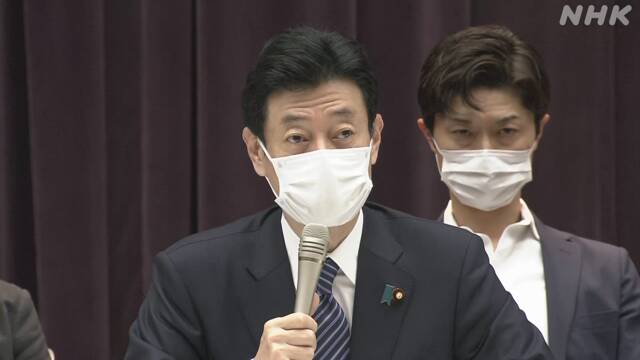At the basic coping policy subcommittee held on the 14th, the original government policy was changed to apply "priority measures such as prevention of spread" to 5 prefectures such as Gunma prefecture and Hiroshima prefecture, and to forgo the state of emergency in Hokkaido. , Hokkaido, Okayama, and Hiroshima will be subject to a state of emergency from the 16th.
Interviews with attendees revealed that the background to the change in the government's consultation for the first time was the strong sense of crisis among experts regarding the infection and medical conditions in the three prefectures.
At the beginning of the meeting held from 7:00 am on the 14th, the government's policy to add five prefectures, Gunma, Ishikawa, Okayama, Hiroshima, and Kumamoto, to the target of "priority measures" was consulted.
According to one of the attendees, there was a series of disagreements about the government's policy, especially in Hokkaido, Okayama, and Hiroshima,
where the number of infected people is increasing rapidly,
the degree of medical pressure is extremely high, and the
infection status.
Almost all experts stated that they should declare a state of emergency from the three points
that the indicators of the medical system and the medical system are generally in the "stage 4" stage
.
Specifically,
▽ In the current situation where many indicators correspond to stage 4, the measures to be taken are not priority measures but emergency declarations.
▽ If you do not declare an emergency in this situation, until now
It is said that there was an opinion that it was
inconsistent with the judgment that issued the declaration and could not be explained, and that it was not
a situation where we could wait another week to see the effect of the measures.
In response, the person in charge of the Cabinet Secretariat heard the intentions of the governors of the three prefectures, and then explained that the government would like to respond with priority measures rather than a state of emergency.
Specifically, in Okayama and Hiroshima prefectures, infected people are seen in the center of the area and are not in a situation where they spread to other areas. It shows the situation, and there is room to improve the situation like Miyagi Prefecture if strong measures are taken under priority measures, and in Hokkaido, measures to request restaurants not to serve alcoholic beverages all day long. The explanation was that he issued a medical emergency declaration unique to Hokkaido and confirmed that he would respond.
Further discussions continued, and experts pointed out that the situation of medical pressure in each region was more severe than expected, but at around 9 am, Minister Nishimura, who was temporarily absent to attend the cabinet meeting, was in charge of economic revitalization. Returned to the venue.
Then, Minister Nishimura announced that he would cancel the initial consultation and reconsider the policy of issuing a state of emergency to Hokkaido, Okayama, and Hiroshima.
There was no objection from the experts to the new consultation, and it was unanimously approved.
After the meeting, the experts who attended responded, such as "I was able to actually collide with the government at the meeting" and "I am glad that it was the first time for the government to reconsider the decision I made once." There was an opinion to evaluate.
After the meeting, Chairman Shigeru Omi of the subcommittee agreed with NHK that "most experts need to declare a state of emergency in Hokkaido, Okayama, and Hiroshima, even if they disagree with the government. I thought that it was more necessary than ever to communicate firmly. In the worst case, when approaching the subcommittee, the scenario of returning the consultation and asking the government to reconsider and holding the subcommittee again tomorrow. I also had in mind. I think that the government reflected the strong feelings of the experts in the judgment. "

